Character names can be one of the toughest challenges for an author. How to find one imbued with meaning? One that stands out? One that feels personal, yet unique? Well … how about just using your own name? In more cases than you might expect, that’s what authors do: They put themselves, under their own names, into their stories. It doesn’t necessarily happen often, but it is common enough that there’s a term to describe it: “self-insertion.” And it’s a long, time-honored tradition; back in the late 1300s, Chaucer included himself as not just a chronicler but one of the characters in The Canterbury Tales.
Most authors will agree that there’s a bit of themselves in every one of their stories, but it’s quite something different to be a named character in your own text. What do you do with yourself in your own story? Just sneak in for a brief cameo? Reveal yourself as a godlike persona? Could you kill off your fictional self?
All of those things happen, and have happened—just check out these eight examples of authors who were able to script how their story ends, at least on paper.
Jeffrey Ford — “Pretty Good Neighbor” (2023)
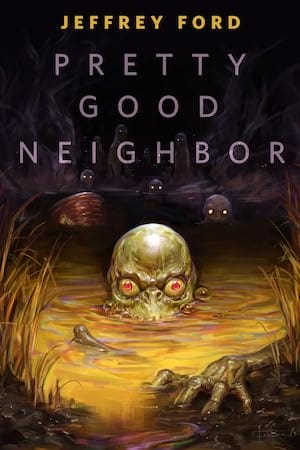
We reached out to Ford via email—initially, he says, he “ripped this technique off” initially from author Isaac Bashevis Singer, because “it makes the speculative more convincing and the telling more powerful.” Ford has used the technique since the 1990s, but says it appears in “only about 25 [of my] stories out of close to 170.” But he goes one further, as in stories like his recent contribution to Tor.com, “Pretty Good Neighbor” – he also includes his wife Lynn. Why? “She’s my hero in real life, and you couldn’t ask for a more wonderful character – fierce, fearless, loyal, an adherent of reason, and a good person.” Other recent examples of Ford directly including himself (usually as “Jeff”) or Lynn include “Beautiful Dreamer,” “Monkey In the Woods” and “The Match.” As for what prompts his self-inserts, Ford admits, “I have no idea. I just feel it as I’m writing a piece.”
Roger Zelazny — The Hand of Oberon (1976)
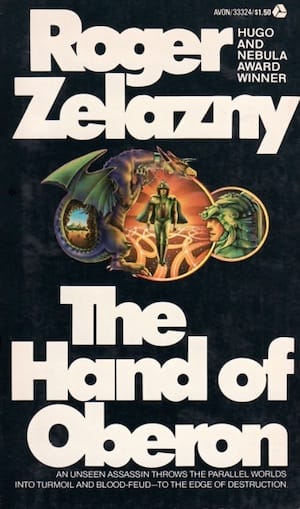
While writing the expansive The Chronicles of Amber series (two arcs of five novels each), Zelazny gave himself a passing appearance in the fourth book from the first arc, known as The Corwin Cycle. In these books, the very long-lived Prince Corwin relates his adventures and reunion with his family after a bout with amnesia. Corwin follows an investigation into a dungeon where he (and the reader) briefly meets Zelazny himself—a pipe-smoking guard named Roger described as “lean” and cadaverous.” Guard Roger tells Corwin he’s “writing a philosophical romance shot through with elements of horror and morbidity,” which actually sums up The Chronicles of Amber quite nicely. Holy Never-Ending Story!
Stephen King — Song of Susannah (2004)
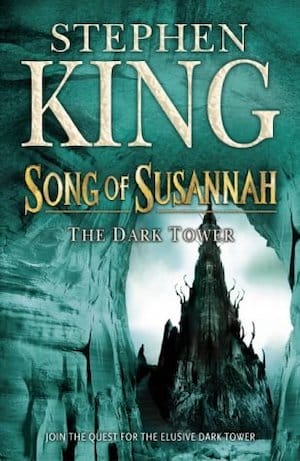
King has lurked around the edges of his characters for decades. He writes so often about writers as villains and heroes, in crisis and as saviors. But in the sixth book of his Dark Tower series, King himself shows up as an adversary to the Crimson King, who tries to off the author in order to stop the story from being told. At the end of the book, a diary by “Stephen King” is included, and notes that the fictional author King died on June 19, 1999. King (the real life one) was seriously injured after a van hit him on that date. That’s some dark stuff, even for the master of horror.
Sarah Pinsker — “And Then There Were N-One” (2017)
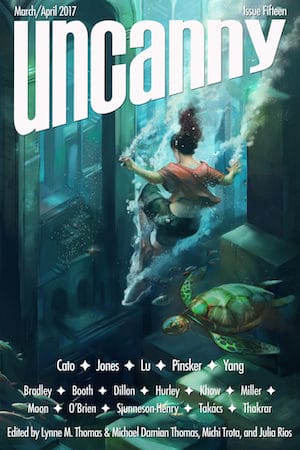
In her novella, Pinsker dives directly into self-insertion by turning virtually every character in her story into a Sarah Pinsker. There’s a murder at an interdimensional convention whose guests are all versions of Pinsker from alternate timelines—and then one of them is killed off. Initially, Pinsker says the story was about a main character named Daria, but it didn’t gel. “I remember the dawning horror that I knew how to make it work,” she responded (via email) when asked about the story’s origins. “For this story, it’s not an act of vanity; it’s an act of personal exploration.” She also notes that “even though they all have my name, the real me only has a walk-on part.” (Like Ford, she also included a few real people in the story “because I was at a retreat with them while I was writing part of the story and [I] asked if anyone wanted to be killed off in a story.”)
Philip K. Dick — VALIS (1981)
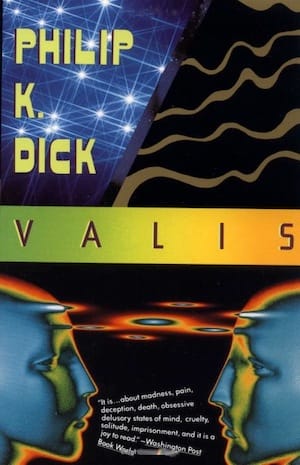
All you Horselover Fat fans, come gather round for the trippy majesty that is VALIS. Philip K. Dick is a narrator, a character, and there’s a character named after him—Horselover Fat. And as Dick lets the reader know early on, “Horselover Fat” is a combination of the Greek meaning of Philip (a lover of horses) and Dick (German for “fat”), so there you are. In the story Dick and Fat interact; sometimes Dick (the character) discusses Fat with the other characters, all while everyone seeks out a toddler who might be an incarnation of God. (By the end of the book, Philip and Horselover become one, which feels like destiny.)
Louise Erdrich — The Sentence (2021)
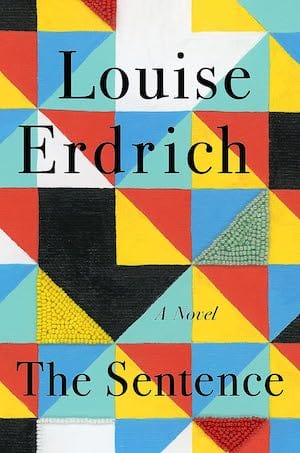
There’s likely an entire doctoral thesis to be written as to why self-insertion is more popular among male authors. Pinsker and Erdrich are among the few women or non-binary authors who’ve included themselves in their works. (Prove me wrong, hive mind!) In Sentence, Pulitzer Prize-winning author Erdrich creates a doubled universe by telling the story of a bookstore haunted by the specter of its most annoying customer. The bookstore in question is owned by a quirky writer of a certain age named Louise…in real life, Erdrich owns Birchbark Books in Minneapolis. Louise isn’t the main character—that’s a former convict named Tookie—but it’s an interesting choice by the author.
C.S. Lewis — Out of the Silent Planet (1938)
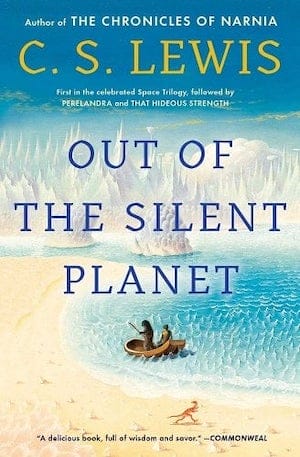
More than just a fantasy writer (The Chronicles of Narnia) and lay theologian, Lewis also dipped into science fiction…though there was more than a hint of fantasy elements there, too. His Space Trilogy begins with Silent Planet and continues with Perelandra, both of which feature the author as an interacting character and narrator. In the first two books, Dr. Elwin Ransom is kidnapped and sent to Mars, eventually traveling to Venus. Lewis appears at the end of Silent Planet as a pal of Ransom’s who goes by the doctor’s house so that Ransom can tell him his tale, while in Perelandra he’s a bit more involved, sometimes interrupting the story to offer commentary.
Charles Yu — How to Live Safely in a Science Fictional Universe (2010)
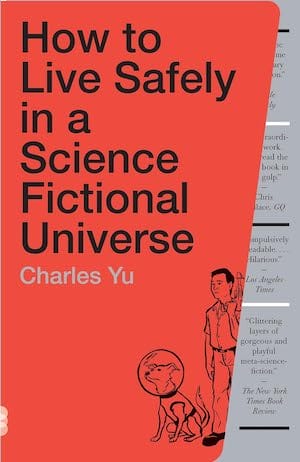
It takes a lot of self-confidence to self-insert in your debut novel, but Yu barely seems to blink as he makes “Charles Yu” the protagonist in Fictional Universe. In the story, “Charles Yu” knows how to repair time machines and lives in his own contraption. One day, Yu sees Future Yu leave the machine and shoots him – but before Future Yu dies, he hands Present Day Yu a book. Present Yu is now caught in a loop where he has to back in time, hand his past self the book—and then get shot. And then things really start to get weird. After all, if you’re given a book about your life, what happens if you skip to the end?
***
What are your other favorite examples of authors who’ve inserted themselves into their work—we’ve skipped over some of the more obvious examples, so let’s discuss in the comments!
Randee Dawn is the author of the funny, fantastical pop culture novel Tune in Tomorrow, which was a finalist in the 2023 Next Generation Indie Awards. She’s also the co-editor of The Law & Order: SVU Unofficial Companion and co-edited the anthology Across the Universe: Tales of Alternative Beatles. An entertainment journalist who writes for The Los Angeles Times, Variety, Today.com, and many other publications, Randee is working on her follow-up to Tune in Tomorrow and lives in Brooklyn with her spouse and a fluffy, sleepy Westie.











Mercedes Lackey wrote herself into the Valdemar books and gave herself a hunky love interest.
Kurt Vonnegut liberated his characters at the end of Breakfast of Champions.
If we’re counting comic books, Grant Morrison ended his run on Animal Man by stepping in for a nice chat with Buddy (and the readers).
I´m sure I´ve read somewhere that Ransom is a character inspired by Tolkien; and in turn Treebeard is inspired by C. S. Lewis.
My favourite case of self-insertion is Death is a lonely business by Ray Bradbury.
In Black Easter/The Devil’s Day, James Blish Tuckerizes several SF authors as priests. Among them is “Father Atheling, a wall-eyed grimorian who saw portents in parts of speech and lectured everyone in a tense nasal voice until the Director had to exile him to the library except when business was being conducted;” William Atheling was the name Blish used as a critic of SF works (including his own).
Will Wight’s books (most notably the Cradle series) are all set in the same multiverse, and he has written a series of “who would win in a fight” vignettes between his characters. In one story he wakes up in the arena and doesn’t even try to fight the main character that he is put against. It’s pretty funny. Actually, he has said that he always writes a secret stash of resources for himself into his world notes in case he is ever transported there.
Lin Carter appears as the “editor” of the “manuscripts” that make up the novels in his “Callisto” series, which are homage to Edgar Rice Burroughs. In the sixth novel, Lankar of Callisto, he is himself transferred there and has numerous adventures.
I am shocked – shocked, I tell you – to find Chester Anderson and The Butterfly Kid overlooked in this context. Anderson makes himself the first-person narrator from the start (being vaguely offended, he says, by first-person narratives where the narrator isn’t the author), and features his real-life friend Michael Kurland as sidekick. This was successful enough that Kurland wrote a sequel (Unicorn Girl) featuring himself and friend T. A. Waters, and Waters completed the trilogy in The Probability Pad.
Sadly, I think the only one semi-easily findable these days is Kurland’s (he has most of his books available in e-form). The Anderson is at least a minor classic, not just for the self-insertion but for the period-perfect Greenwich Village setting.
Phillip Jose Farmer was in most of his books as I recall.
Dorothy L Sayers wrote herself into her Lord Peter Wimsey stories as Lord Peter’s love interest.
She then made Lord Peter trail after her, practically begging her to marry him, for FIVE YEARS before writing a book where she was the protagonist, in which she spends the entire novel ranting about how much it sucks to be an intelligent woman because men don’t want to marry intelligent women, then agrees to marry Lord Peter at the end when she finally realises he’s been treating her as his equal the whole time.
It’s not SFF, but Clive Cussler appears in most of his books.
#10: Actually, later Cussler introduces enough in the way of futuristic tech – especially various of the villains’ Doomsday McGuffins – that I’d call much of it at least borderline SF. (See also the AI computer interface NUMA acquires in the later volumes.)
Not SFF, but country singer Kinky Friedman retired from performing to write a series of novels in which country singer Kinky Friedman retires from performing and solves mysteries. (The real Friedman later went into politics, without any great success)
@9
Not by name, though.
@11
The line between techno -thriller and SF is very thin and often fairly arbitrarily drawn.
Stephen King has been such a ubiquitous presence in popular culture for so many decades, that I’ve always been amused by the fact that all the characters who occupy King’s extended universe would presumably live in a world where ‘Stephen King’ doesn’t exist. That would mean a world without Stanley Kubrick’s The Shining. A world where The Shawshank Redemption has never been in IMDB’s top five. Unimaginable.
Based on that rationale, King writing himself into his own universe actually adds a bit of verisimilitude.
John C. Bunnell@7: The Butterfly Kid was actually nominated for a Hugo Award. And IMO it deserved it.
L. Ron Hubbard wrote himself – or at least his pen name, René Lafayette – into at least two of his stories in Unknown, “The Indigestible Triton” and “Typewriter in the Sky”. (N.b. – this is an observation, and NOT a recommendation.)
The first person narrator of Howard Schoenfeld’s “Build Up Logically” is supposed to be the author of the story (most of the time), so I think it counts, even if he’s operating under the name of Hillburt Hooper Aspasia. Actually, I suppose he’s in it twice – as Aspasia, and as the man in the grey overcoat who is also Aspasia… look, just read it, I promise you it makes sense in the end.
Edgar Rice Burroughs included himself as John Carter’s nephew in the Barsoom books, the stories of which Carter allegedly told him in their meetings so Burroughs could write these down and publish. His role there was small, but nevertheless he was there as himself. The same device, if on a much smaller scale, he also used in his “Beyond the Farthest Star”, where the protagonist, Tangor, allegedly found a way to send messages to Burroughs ‘ typewriter.
@2 Kurt Vonnegut also included himself as a nameless POW in Slaughterhouse-Five, who is identified after he has any dialogue with “That was I. That was me. That was the author of this book,” since he did in fact survive the firebombing of Dresden while a POW.
I’ll be honest, I don’t actually like this trope very much, at least when it’s blatant. While I don’t know that I ever realized the Roger in Amber Chronicles was Zelazny himself, I know I didn’t like it very much when King inserted himself into Dark Tower. It just feels unnecessary and self indulgent.
Another related variation is inserting someone else into the narrative. In one of Paul Cornell’s Shadow Police novels, he inserts Neil Gaiman into a role. While there is an addendum to the novel that explains it was approved and in good fun, it really threw me out of the narrative because now I’m trying to square my real world understanding of Gaiman as novelist (among many hats) with the shadowy conspiracy Gaiman in the book, knowing they’re intended to be the same person.
It just doesn’t fit.
Interesting to see this motif. David Henry Hwang did this in two or three of his theatre pieces, and it’s been picked up by other Asian American playwrights (one of which actually had a multiverses crossover).
@18, I suspect you would also hate these bits, particularly since I know for certain that 75% of the incidents in one play actually happened.
Not SF, but perhaps the ultimate of this trope are the Ellery Queen mysteries. EQ is the author of books about the author EQ who writes and solves mysteries (none of which are the books we have access to). Ironically, there is no person named Ellery Queen. It is a pen name for Frederic Dannay and Manfred Bennington Lee. The EQ magazine uses a Q with two tails as its colophon.
Some of David Gerrold’s short fiction have him as the protagonist, like the duology “The Strange Disappearance of David Gerrold” and “The Equally Strange Reappearance of David Gerrold.”
Not SF, but Isaac Asimov inserted himself under another name into The Death Dealers. Oddly enough, it’s a very unflattering portrayal of a man who will sexually assault anyone female within arm’s reach and is in serious danger of losing his job for it, even in the 1950s.
Julian May had a character in the Saga of the Exiles with her family name – Claude Majewski, the paleontologist.
Randall Garrett’s Lord Darcy story, A Stretch of the Imagination has a novelist character, Ernesto Norman, who sounds quite Randall Garrett-ish. The murder victim is a not quite disguised Harlan Ellison.
Arthur C Clarke appears more or less as himself in ‘I Remember Babylon”. A story about a proposed attempt to use communications satellites to bring about the downfall of Western civilisation. As prophecy it was disproved by the internet’s most viewed material and its failure to destroy the world as we know it. He was obviously making fun of himself and his own invention of the concept of communications satellites. Clarke also appears as a rocket engineer in an exaggerated but improved form of the British Interplanetary Society actually building spacecraft in the short story “Inheritance”.
Robert Jordan wrote himself into the Wheel of Time series as the bearded man angreal that Rand has for a few books. Arguably, he could also be the ogier Loial.
Really glad you included the Zelazny one. The physical description he gives himself was spot-on, as was his interest in historical romances. I remember running into him a few times at SCA events, trying his best to live the life he gave his characters in a far more mundane world.
Not sci-fi, but Anthony Horowitz has written himself into a series of books, starting with The Word Is Murder. Horowitz in the story is something of a sad-sack Dr. Watson to an odd, interesting Sherlock named Hawthorne. In-story Horowitz is constantly bested in every way by the peculiar Hawthorne, and in the Twist Of The Knife, the most recent book, Hawthorne is working with Horowitz’s agent about a possible book deal. A fictionalized version of Horowitz’s play Mindgames is central to the murder that book, and, at one point, Horowitz is arrested as a suspect in the murder of a critic that panned the play. The other two books in the series are The Sentence Is Death, and A Line To Kill.
Just throwing my usual reference to the Star Trek novel How Much for Just the Planet? by John M. Ford, as he not only wrote himself into the story (as The Stage Manager) but also included several of his writer friends, many of whom also wrote for Trek, except for that British guy who John called “Ilen the Magian”.
HE wrote for Doctor Who. :)
There is, of course, all of the lovely meta stuff in William Goldman’s The Princess Bride about the genesis of the story, in which he appears as a character. In my bookselling days we had a steady stream of gullible readers looking for the “original Morgenstern version.”
Speaking of Arthur C. Clarke, an early novel “Glide Path” seems to be based on his own experiences during WWII, though the protagonist has another name.
Special shoutout to Bret Easton Ellis for making himself the main character of Lunar Park. That book terrified me and I still think about it years after reading it!
Phil and Kaja Foglio, artist/writer respectively of the webcomic Girl Genius, have written themselves into the pages of the comic several times, in speaking roles and everything. Kaja’s persona is the main character of a side story within the comic. They’re unnamed in the comic (Phil’s persona is referred to in context as “the storyteller”), but in the novel adaptations, they’re specifically identified as “Professor and Professoressa Foglio”. One of the conceits of the novels is that these are textbooks written by the professors, who experienced some of these events, researched the rest, and are now teaching a university course on them. It’s a framing device only and doesn’t affect the narration, mostly showing up in the footnotes where “the professors” are snarky about things.
Score that for female author self-insert, and for not being annoying at all. If you don’t know, all you’ll notice is that these characters haven’t gotten names in the comic yet. If you’re in on the joke, it just gets funnier.
@22 – Asimov inserted himself under his own name in his other mystery novel, Murder at the ABA.
1) Grant Morrison wrote himself into his series for DC comics, Animal Man (resulting in one of the all time-great issues at the end of his run, #36)
2) Paul Auster wrote himself into his genre-adjacent book City of Glass.
3) Douglas Hofstadter wrote himself into one of the fictional dialogues in his (basically nonfiction) book Gödel, Escher, Bach.
Another Vonnegut SF-related item: in his last novel, Timequake, he interacts quite a bit with Kilgore Trout, who, though named for Theodore Sturgeon, is much closer to Philip K Dick, and, like Horselover Fats, is an alter-ego of the author.
@35,
I believe Kilgore Trout was a pseudonym/alter ego for Phillip Jose Farmer. (Did he write himself into his Riverboat series?)
In Edward L. Beacn’s Cold Is the Sea (a sequel to his Run Silent, Run Deep) he has two of the officers from the first book discussing the misfortunes and fortunes of another officer. This officer had, after a good career in WWII, been given command of a submarine with a new quiet, special engine. The submarine had been a mechanical disaster. So the Navy made it up to him by giving him command of the submarine Triton.
As it happened, that happened to have happened to Edward L. Beach. So the characters were talking about the author.
There are enough references to King’s novels and film adaptations in his books to suggest that they do live in a world where King exists as an author.
Just maybe not with the same bibliography — Holly Gibney’s world has the movie CARRIE in it, but her world’s King probably wrote something other than MR. MERCEDES that particular year.
The books that have the most cross-references may have quite a different ‘King” section in the local library. Kinda makes me wish they did interlibrary loan.
On the other hand, after reading UR, maybe not…
Jorge Luis Borges wrote himself (and some of his friends) into many of his stories, sometimes as the person the story is told to, but some other times as the unlikely protagonist.
In “The Other,” he encounters and has a conversation with his younger self; in “The Book of Sand,” he buys a book of infinite pages; in “Tlön, Uqbar, Orbis Tertius,” he witnesses the gradual intrusion of an alternate universe in our reality (or maybe he is the one creating it?); in “The Aleph,” he pretends to ignore the revelation of a portent of portents (a point in space that contains all other points) to have his petty revenge on a romantic rival.
Finally (for now; there are more examples), in “There Are More Things,” he investigates the mystery of an apparently haunted house and comes face to face with a Lovecraftian horror.
The Heinleins attend the party at the end of The Number Of The Beast, plus all the names of The Beast are anagrams of Robert Anson Heinlein.
In one of Chandler’s weirder stories, Grimes falls through (IIRC) another Chandler series (Empress Irene) and at least one other author’s stories (Dominic Flandry is much worse than Anderson portrayed him), finally appearing in Chandler’s quarters on board ship — whereupon Chandler writes Grimes back to his proper location and is glad to see the last of him. I’m blanking on the name as it’s been half a century since I read this.
@35: Farmer had one book published as “Kilgore Trout”, after Vonnegut had used the name repeatedly as a character.
Hermione Granger is thought to be Rowling’s self-insert.
J.R. Rain wrote himself into his Vampire For Hire short story, Blue Moon. Samantha Moon encounters him in the Starbuck’s as he is sitting at a table typing on his computer, and they have a conversation.
David Brin didn’t exactly write himself into one of his novels, he referenced himself. I think the book was Heart of the Comet, co written with Gregory Benford, but I could be wrong about that. I will write back when I can give more details.
Ruth Ozeki writes herself (and her husband!) into A Tale for the Time Being. It’s not really SFF but there is a speculative element to the story. It’s a good one but I am generally not a great fan of authors writing themselves into their stories. It was really off-putting in Song of Susannah.
@ 42. excessivelyperky
IIRC, Hermione is not precisely Rowlings alter ego, but she did put a lot of herself into the character.
I could be wrong, of course. It has been a while since I read or watched any of Rowlings interviews.
@36 – I don’t think Farmer appears in the Riverworld series under that name, but a major character is a writer named Peter Jairus Frigate. (I may have the middle name slightly wrong.)
@7: I’m pleased to see that all three of what appears to have been dubbed The Greenwich Village Trilogy are now available as ebooks. I have physical copies of all three, the hardest of which to find was The Probability Pad.
Stephen Brust interviews the narrator at the end of Five Hundred Years Later, and it doesn’t end well (although it is hilarious).
I looked through the comments and don’t think anyone else mentioned this, which is really surprising – but Agatha Christie wrote herself into her novels as Ariadne Oliver, the mystery writer with a Finnish detective as one of her most famous protagonists (obviously spoofing on Agatha Christie’s Hercule Poirot). It’s an interesting glimpse into who Agatha Christie was as a person, considering some of the mystery around her personal life (esp. her disappearance and reappearance).
In 1993, avant-pop author Steve Erickson published the thoroughly weird Arc d’X, which starts off as an historical novel but quickly devolves into an alternate timeline saga. After passing through the alternate present, the novel moves on to a (then) alternate future, circa 1998. In this part of the novel, Erickson pulls possibly off the ballsiest variation on self-insertion: he introduces a minor author named Erickson who is then murdered by a Nazi skinhead. Yikes.
@49 Steve is a card. he implies throughout the Taltos series that he’s writing what Vlad narrated into a mysterious magical box. at one point Vlad meets the stranger with the crazy box, implying that he’s meeting Steve himself.
surprised how long it took in these comments for folks to drop the Heinleins in Number and Burroughs in the entire Barsoom cycle. those were the ones I was scanning to make sure someone got (that & Lewis, but someone mentioned him early).
John Barnes’ Gaudeamus has the protagonist talking to his friend, a writer/college professor, who I believe is named John Barnes.
Steve Gerber, creator of Howard the Duck and writer of the Man-Thing comic, wrote himself into his final issue (#22, October 1975) to wrap up a lot of convoluted plot points, including his participation in the destruction and rescue of the entire universe. The issue was a mix of prose and art, done as a letter to his editor to explain why he was stepping down from writing the series. It’s not hard to imagine that Grant Morrison’s Animal Man self-insertion took inspiration from Gerber’s.
I make an unnamed cameo as myself in Chapter 18 of my fantasy action novel, which is set in Toronto. I was using a real space I’ve worked in and the story is set when I was working there.
I needed someone to be confrontational with the characters and I didn’t want anyone to think I was punching down at them or waste brain cells worrying about it. So I made the person recognizably me since I knew i wouldn’t take offence. Iit’s an Easter egg for people who know me.
People say my book reads like a Marvel movie but set in Toronto. I figured if Stan Lee could do throwaway cameo moments, so can I.
@37 thanks for that tidbit. I grew up loving Run Silent Run Deep the movie, then discovered the book trilogy as an adult. Mesmerizing stories, imo.
In the Elfquest saga Cutter is Wendy Pini, the artist/author, and Cutter’s sidekick, Skywise, is the coauthor, and Wendy’s husband, Richard.
Michel Houellebecq appears as a character in his novel The Map and the Territory, where he is gruesomely murdered and decapitated. His work isn’t marketed as science fiction, but most of it has at least a subdued science ficitional element.
Stephen King is referenced in several Stephen King stories, including if I recall rightly, “The Library Policemen.” I think he’s also at least implied to make a cameo appearance in Firestarter, where he gives Andy and Charlie a ride when they’re hitchhiking.
Dave Sim appears in his comic Cerebus the Aardvark, as Cerebus’ creator. He lectures Cerebus, then grants him a wish.
Although not writing “himself” into the story, George RR Martin seems to self represent in “Fevre Dream” as the riverboat captain.
I thought of a couple more, from the visual medium.
John Byrne, the comic book writer/illustrator wrote/drew himself into an issue of The Fantastic Four back in the 1980’s. As I recall, Byrne was summoned by The Watcher to observe “the Trial of Reed Richards,” who’d been hauled before an intergalactic court on the (not unreasonable) charge of saving the life of Galactus, and thereby condemning untold trillions to death (what with Galactus’s habit of eating planets, and all). And the cartoonist Stephan Pastis introduced a mordantly unflattering version of himself as a recurring character in his wonderful daily strip, Pearls Before Swine.